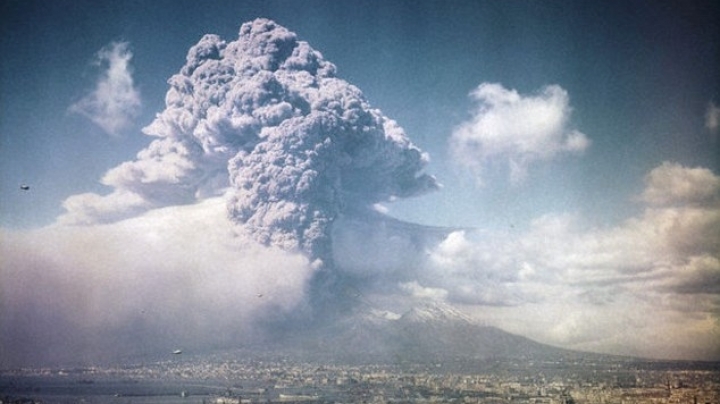Extinct volcano near Rome is waking up and could erupt in 1,000 years

It was thought to be dead, an 'extinct' volcano that has never erupted in human history.
However, researchers have been stunned to find Colli Albani, a 15-kilometer semicircle of hills outside Rome, is coming back to life, reports Daily Mail.
A new report reveals new steam vents, earthquakes and a rise in ground level in the hills and surrounding area, leading researcher to warn it is starting a new eruptive cycle and could potentially erupt in 1,000 years from now.
The new study published in Geophysical Research Letters, a journal of the American Geophysical Union, concluded Rome and its suburbs are not in any immediate danger.
However, previous research shows that in past eruptive cycles the volcano unleashed both low blasts of hot ash and lava that rolled down the volcano's slopes at tremendous speeds.
Under the right circumstances the volcano has the potential to be as destructive as Mt. Vesuvius, which destroyed Pompeii in 79 A.D., Fabrizio Marra, a volcanologist at the National Institute of Geophysics and Volcanology in Rome and lead author of the new study, told Elizabeth Deatrick of the AGU blog.
The eruption could generate massive, far-reaching clouds of smoke and ash, and send rocks raining on nearby cities, according to the study's authors.
The center of Rome is about 30 kilometers away from Colli Albani and would only be severely affected by the eruption if the wind blew in the right direction, but the city's suburbs reach all the way to the base of the volcano and could be devastated by the event, Marra said.
Although a massive eruption of Colli Albani is not likely for another millennium, Marra said he hopes the new research is a wake-up call for closer monitoring of the volcano.
Two decades ago, geologists began to suspect something was happening around Colli Albani when they noticed the hills had risen unexpectedly.
In volcanic regions, this usually means a bubble of magma is forming beneath the surface, pushing the ground upward, according to Marra.
An earthquake swarm, which shook Rome from 1991-1995, plus the recent appearance of a steam vent near Rome's international airport, sparked an investigation into the area's potential danger.
In the new study, scientists determined the age of rocks from past eruptions and studied satellite images of the land around Colli Albani to determine its eruptive history.
Rather than being extinct, the volcano operates on a 31,000-year cycle of eruption and dormancy, according to the new research.
The volcano's cyclical nature is due to the unusual underlying geology of the region, Marra said.
Periodically, a giant 'bubble' of pressurized magma forms under Earth's crust, forcing its way upwards into a fracture between two pieces of land.
At Colli Albani, two pieces of land forming the fracture above the magma bubble are being pressed together by the surrounding geology, keeping the magma bubble from erupting.
The most visible sign of this magma bubble is an increase in height of the hills and the surrounding area as the bubble pushes up from underneath the ground.
Over the last 200,000 years, the land around Colli Albani has risen by 50 meters as magma bubbles form and vanish, the team estimates.
The land is continuing to rise more than 2 millimeters a year, indicating the underground bubble of magma is likely still growing, according to the study's authors.
The new study finds the fracture keeping the magma bubble underground has changed over the last 2,000 years.
Now, instead of the land being pushed together, the two pieces are sliding against one another.
When the land shifts, the pressure over the bubble is released and the magma has the opportunity to erupt to the surface—which is what the study's authors suspect is happening now.
The volcano last erupted 36,000 years ago, meaning Colli Albani is overdue for an eruption, but Rome is not in any immediate danger, Marra said.
Although the area is showing signs of volcanic activity, he estimates the next serious eruption isn't likely to occur for another 1,000 years and will be preceded by more moderate volcanic activity—the formation of a cone, for instance.
'We expect for sure some initial stages which may not be so explosive, but it may evolve in time,' he said.
SCIENCE
- The 'zombie volcano' growing beneath New Zealand: Geologists discover massive magma chamber under North Island
- Eruption fear in Iceland as a DOUBLE earthquake rocks massive Katla volcano
- One of Japan's most active volcanoes due for major eruption within 30 years
- Rome in shock as Bernini elephant statue vandalised